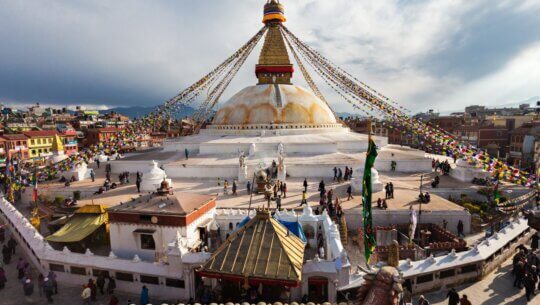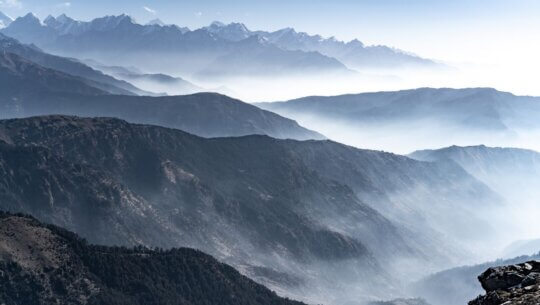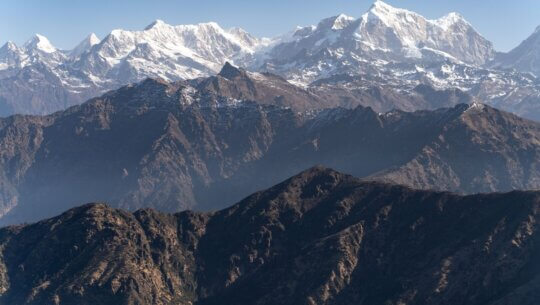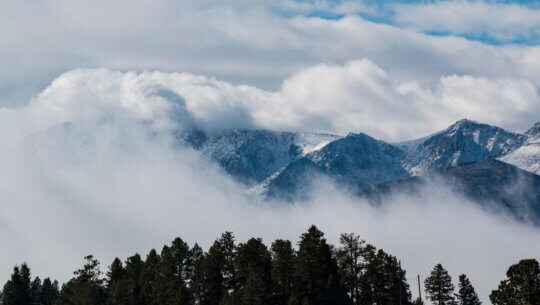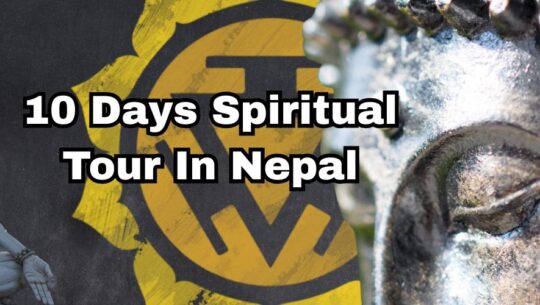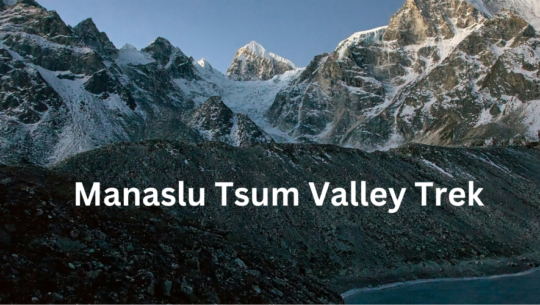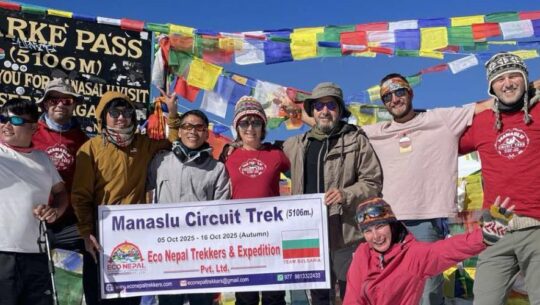Pikey Peak Trek – 8 Days
TripAdvisor Reviews Recommended by 99.99% travelers
USD 950
Nepal
8 Days
Moderate
4,065 meters (13,336 feet) at Summit of Pikey Peak
Hotel/Tea house/Guest house
Car/Bus/Praivate Jeep
1-20
Feb, Mar, Apri, May, June, Sep, Oct, Nov & Dec.
- Enjoy the sunrise at Pikey Peak (4,065m) and get a 360-degree view of mountains including Everest, Lhotse, Makalu, Kanchenjunga, Manaslu, Dhaulagiri, Annapurna, Gaurishankar, and the Langtang range.
- Get the thrilling off-road experience from Kathmandu to Dhap.
- Stay in quiet Sherpa villages like Jhapre and Junbesi.
- Opportunity to learn more about Sherpa Culture by visiting historic monasteries like Thupten Choling and Chiwong.
- A compact Himalayan journey with comparatively less altitude risk.
- Get the real Himalayan experience by walking through rhododendron forests, yak pastures, prayer-flagged ridges, and mani walls.
- Explore the rare flora and fauna available in the lower Everest Region.
- Perfect trek for adults above 16+
Pikey Peak Trek – 8 Days Brief Insight
Guess the trek that offers the breathtaking views of Everest at comparatively low cost, without the heavy crowd and extreme altitudes of traditional routes? If your answer was Pikey Peak Trek, you are absolutely right !!!
This trek through the lower Everest region comes with an easy and well-maintained trail, making it accessible all year round.
Furthermore, this entire trip is road-based, which helps you avoid flight delays and keep the cost manageable.
Talking about the altitude, at max you will go up to Pikey Peak, which stands at 4,065m. But the coolest part is when you reach the summit, you can witness eight of Nepal’s eight-thousanders from one single location.
Additionally, Pikey Peak is also quite famous for its mesmerizing sunrise and sunset views. As the golden rays touch the snow-capped peaks, they paint the Himalayas in a stunning blend of colors, making the entire range look nothing short of heavenly.
No wonder! Pikey Peak was Sir Edmund Hillary’s favorite spot to view Everest.
Besides witnessing nature’s gift, this trek can also immerse you in the Sherpa’s cultures and traditions. The name Pikey itself is derived from the Sherpa clan’s deity “Pikey Lhapu Karpo” or “Chyabo Pikey“.
In fact, in July/August, the local sherpas even gather to celebrate the Pikey Peak Festival to worship their clan god.
While walking through the villages like Junbesi and Jhapre, you will experience the authentic Sherpa’s day-to-day life and learn their centuries-old customs.
Furthermore, visiting culturally important monasteries like Thupten Chholing is going to make your entire experience peaceful.
Why Eco Nepal Trekkers For Pikey Peak Trek?
The top reason to choose us is our highly experienced team. With over 16 years of expertise, our guides and staff know the Pikey Peak route like the back of their hand.
We have instructed each guide to ensure the safety of our travelers. From their experience in the Himalayas, they can handle any kind of difficulty thrown by the mountains.
Furthermore, we as a company believe in eco-conscious traveling. So, with us, you can be assured that no harm will be done to the Himalayas.
Besides that, since most of our team comes from a background of being porters, we ensure that all the porters are fairly paid.
While ensuring fair pay, we also make sure to build a price that is suitable for every kind of traveler.
Apart from that, we also make sure to give all knowledge about the local Sherpa culture of the Khumbu region to our travelers. We help our trekkers connect to the locals, which in the long run helps them to fully immerse themselves in the Himalayan Culture.
Additionally, we also help travelers create an itinerary that’s more suited to them.
However, we also made an 8-day Pikey Peak itinerary that helps you experience everything that Pikey Peak has to offer.
Note: If you would like to trek to Pikey Peak with us, please send an inquiry, and we will be happy to assist you.
- Day 1: Arrival in Kathmandu
- Day 2: Drive From Kathmandu To Dhap
- Day 3: Trek From Dhap To Jhapre
- Day 4: Trek From Jhapre To Pikey Peak Base Camp
- Day 5: Summit To Pikey Peak And Descend To Jasmance Bhanjyang
- Day 6: Trek From Jasmane Bhanjyang To Junbesi
- Day 7: Trek From Junbesi To Phaplu
- Day 8: Drive From Phaplu To Kathmandu
Detailed Itinerary
Day 1: Arrival in Kathmandu
Trek Distance :
N/A
Highest Altitude :
1,350m (4,429 ft) at Kathmandu
Trek Duration :
N/A
Meals :
Breakfast
As soon as you exit Tribhuvan International Airport, one of our team members will be waiting to welcome you, holding a sign with your name on it for easy recognition.
After picking you up from the airport, they will assist you in a Hotel transfer near Thamel.
This whole process takes roughly 1 hour. Later in the evening, we will connect you with the guide for your pikey peak trek.
The assigned guide will give a pre-trek briefing. They will provide you with all the essential information about the trek.
Before calling it a night, we advise you to perform a gear check as well. If you missed something, we can help you out with last-minute rentals as well.
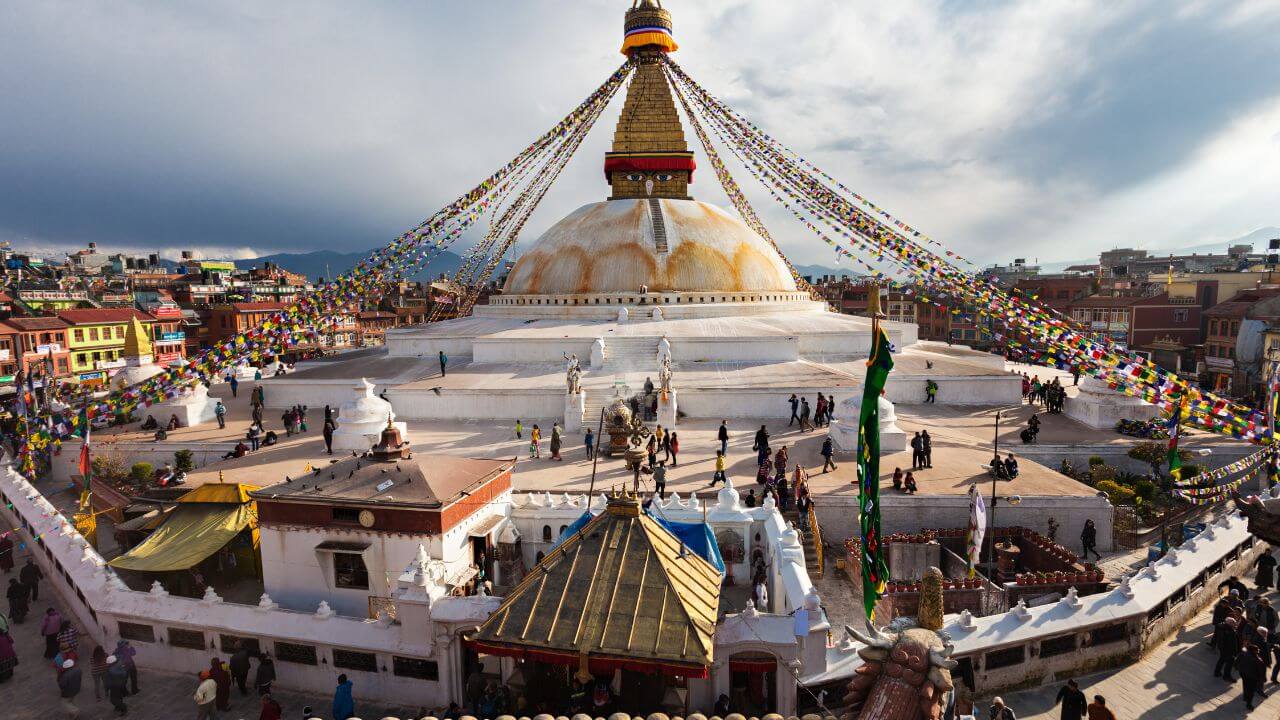
Day 2: Drive From Kathmandu To Dhap
Trek Distance :
240 km (149 miles0
Highest Altitude :
2,850 m at Dhap
Trek Duration :
7 to 9 hours drive
Meals :
Breakfast/Lunch/Dinner
Early in the morning of day 2, we will begin our journey towards Pikey Peak.
This 240 km drive takes around 7 to 9 hours, depending on the season.
Beginning from Kathmandu, we will follow a path through places like Dhulikhel, Khurkot, Ghurmi, Okhaldhunga, and finally reach Dhap Bazaar.
During this scenic drive through B.P. Highway, you will see the Sunkoshi River valley, terraced Hillsides, and the shift from busy city life to peaceful highland communities.
The major setback for today will be the motion sickness caused by the long and winding roads of the B.P. highway.
Today, the highest altitude will be Dhap at 2,850 m. After reaching Dhap, you can visit local markets and experience the first taste of Himalayan Culture.
By the end of the day, you would have faced the elevation gain of 1,500 m.
Day 3: Trek From Dhap To Jhapre
Trek Distance :
13 km (8 miles)
Highest Altitude :
2,920 meters (9,580 feet) at Jhapre village
Trek Duration :
5-6 hours
Meals :
Breakfast/Lunch/Dinner
After a hearty breakfast in Dhap, you’ll start your first day of walking through the beautiful lower Everest region.
This 13 km trek will take you approximately 5-6 hours, which includes rest stops for photos and snacks.
Starting from Dhap Bazaar at 2,850m, you’ll initially follow an unpaved dirt road.
Don’t worry! The first 30 minutes are quite comfortable as you get your trekking legs warmed up.
Then, our route will take you through the charming village of Sigane (via Tapting), located about 6km from Dhap. This will be our lunch stop.
But here’s where things get exciting! As we continue towards Phokte Danda ridgeline, we’ll be treated to your first clear views of the mighty Mount Everest and the spectacular Numbur Himal range.
Then, as you approach Jhapre village, the authentic Sherpa culture becomes more evident. You’ll see traditional stone houses, Buddhist stupas, and the peaceful way of life that has remained unchanged for centuries.
Upon reaching Jhapre at 2,920m, you can also visit the beautiful Buddhist Gompa (monastery) in the village.
Additionally, if we arrive at Jhapre before sunset, we can also head north to a sunset viewpoint. The view of the sunset from there is actually magical!!
Today’s trek is considered easy to moderate, helping you get accustomed to high-altitude trekking. The net elevation gain is only about 70m, so altitude shouldn’t be a concern.
Day 4: Trek From Jhapre To Pikey Peak Base Camp
Trek Distance :
14 km (8.7 miles)
Highest Altitude :
3,640 meters (11,942 feet) at Pikey Peak Base Camp
Trek Duration :
6-7 hours
Meals :
Breakfast/Lunch/Dinner
After an early breakfast at Jhapre, we’ll start our journey towards Pikey Peak Base Camp. The initial part follows a gradual climb through grassy ridges, allowing your legs time to warm up.
Our first major stop will be Bhulbhule at 3,320m, located about 6-7 km from Jhapre. Here, you’ll find some lodges offering spectacular Everest range views.
But here’s where things get really exciting! As we continue through Lhamuje at 3,500m, you’ll walk through dense rhododendron forests that create tunnel-like trails.
The trail then takes us to Samsing Bhanjyang, where you’ll witness broad yak grazing pastures with actual yaks roaming.
You’ll also see abandoned antique yak herder’s cottages and a large mani wall that tells stories of centuries-old Himalayan traditions.
While continuing our journey, we’ll pass by a Swiss-established cheese factory from decades ago as well.
As we approach Pikey Peak Base Camp at 3,640m, the landscape becomes more dramatic with rocky terrain and switchbacks. However, views of Langtang Himal, Annapurna Range, Manaslu, and Ganesh Himal do help you in creating a memory of a lifetime.
Talking about difficulty, today’s trek is moderately challenging with a significant elevation gain of 720 meters. The steepest section comes after Lhamuje.
By evening, you’ll be settled at base camp, ready for tomorrow’s early morning summit push to Pikey Peak.
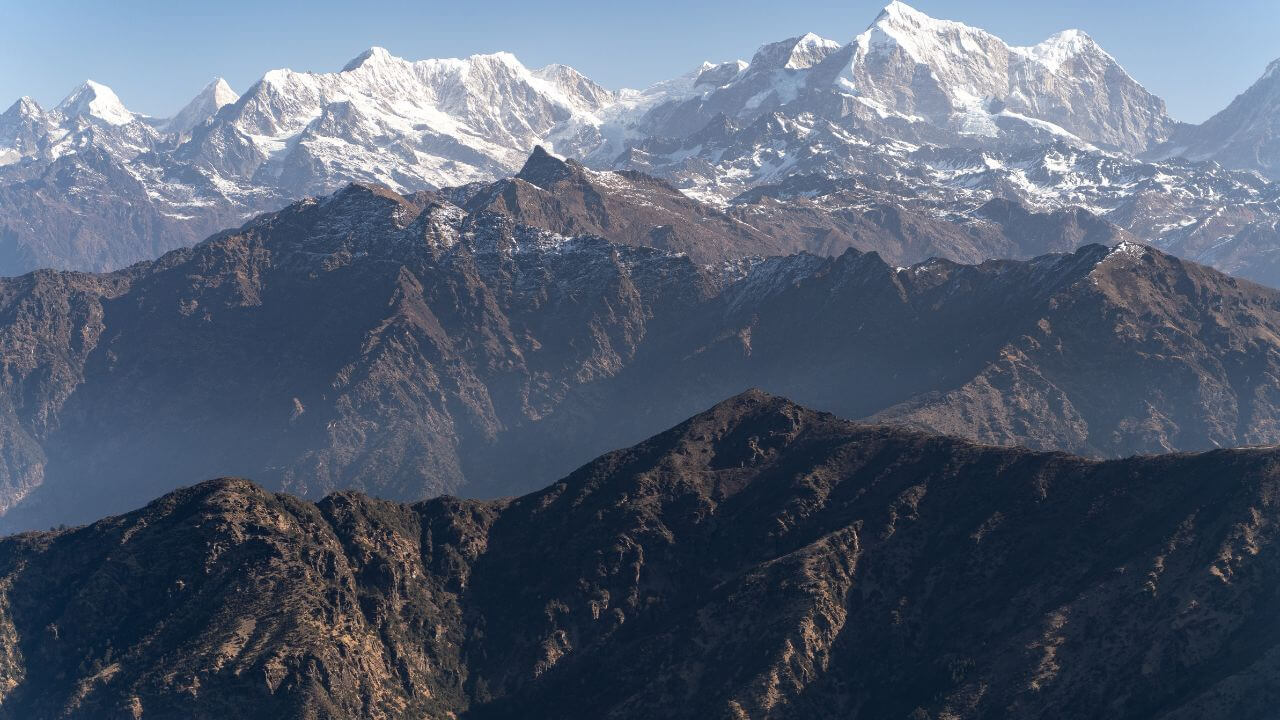
Day 5: Summit To Pikey Peak And Descend To Jasmance Bhanjyang
Trek Distance :
11 km (6.8 miles)
Highest Altitude :
4,065 meters (13,336 feet) at Summit of Pikey Peak
Trek Duration :
6-8 hours
Meals :
Breakfast/Lunch/Dinner
THE BIG DAY IS HERE !!!
After a quick breakfast and some hot tea, we’ll start our pre-dawn climb around 4:00-4:30 AM from Jhapre. After climbing for 2 to 3 hours through the rhododendron forest, we will reach Lhamuje Ridge.
Then, we continue to Samsing Bhanjyang pasture, where you might spot some early-rising yaks in their grazing grounds. The mani walls and prayer stones become more frequent here, reminding you that you’re approaching something truly sacred.
And then finally, you reach Pikey Peak summit at 4,065m, just before sunrise,
Just imagine witnessing eight of Nepal’s eight-thousanders from one single spot. Mount Everest, Lhotse, Makalu, Kanchenjunga, Annapurna, Manaslu; from this spot, you will see it all.
After spending 30-45 minutes at the summit, we’ll begin our descent to Jasmane Bhanjyang at 3,530m. The descent follows switchback paths down grassy slopes and takes about 3-4 hours.
Today involves a significant elevation gain of 1,145m to the summit, making it moderately challenging. However, the best part is that the rapid descent to Jasmane Bhanjyang helps your body recover quickly from the altitude.
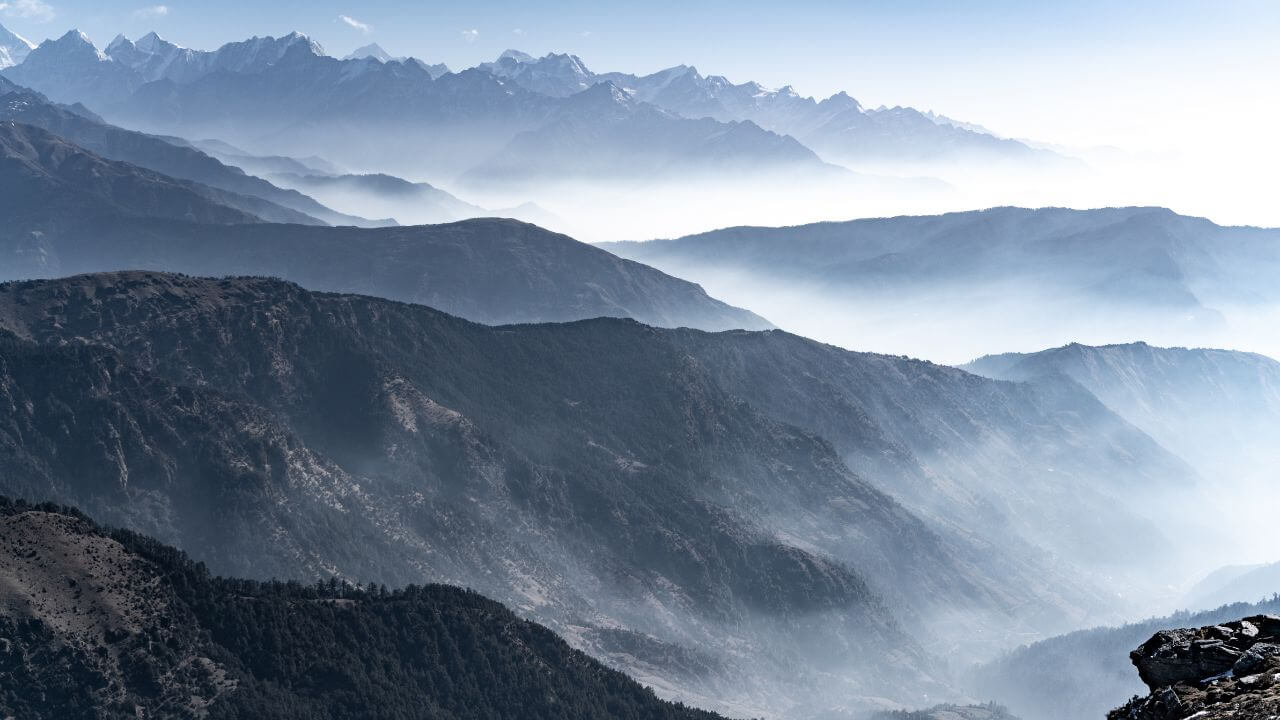
Day 6: Trek From Jasmane Bhanjyang To Junbesi
Trek Distance :
11 km (6.8 miles)
Highest Altitude :
3,530 meters (11,581 feet) at Jasmane Bhanjyang
Trek Duration :
5-6 hours
Meals :
Breakfast/Lunch/Dinner
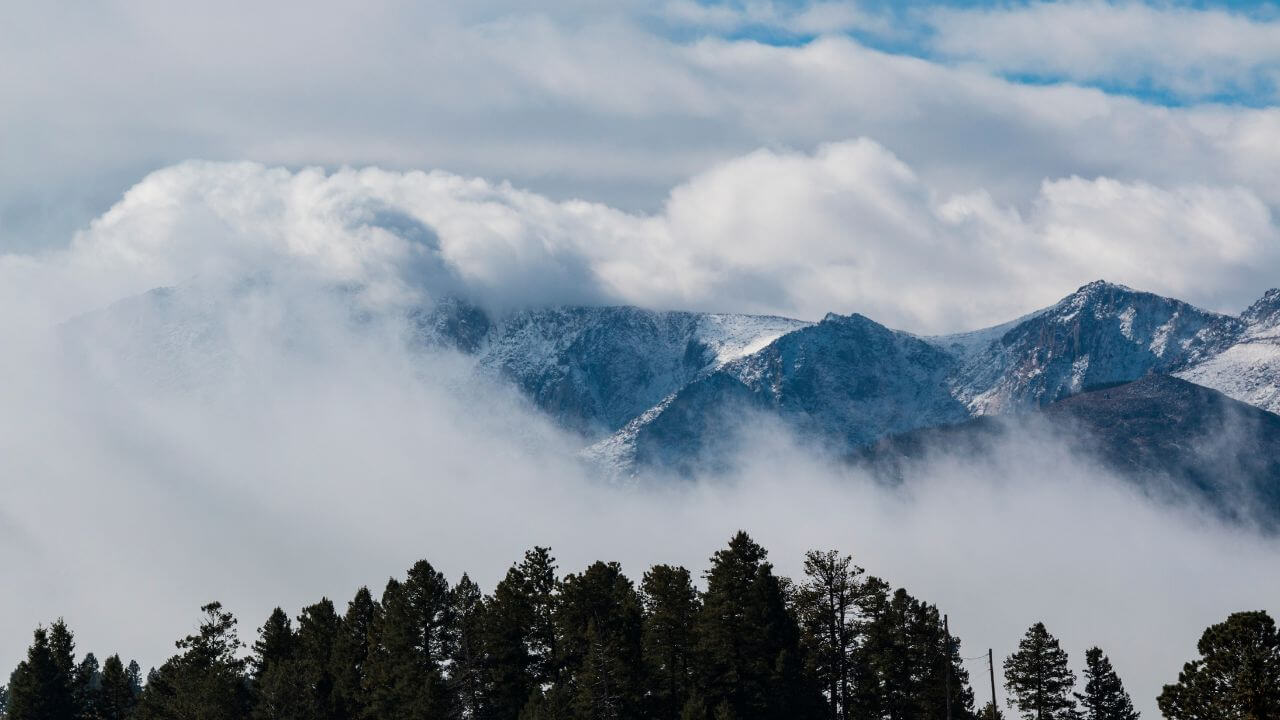 After yesterday’s incredible summit experience, today offers a well-deserved, easier day with a pleasant descent to the historic Sherpa village of Junbesi.
After yesterday’s incredible summit experience, today offers a well-deserved, easier day with a pleasant descent to the historic Sherpa village of Junbesi.
Starting from Jasmane Bhanjyang at 3,530m, you’ll enjoy a net descent of about 830 meters! However, keep in mind that descents can be tough on the knees.
Around midday, we’ll reach Taktor, the junction with the classic Jiri to Everest Base Camp route. This is a perfect lunch stop with better lodge facilities, and you might even meet trekkers heading to or returning from EBC!
But the real highlight of today comes when we arrive in Junbesi at 2,700m – a home to the famous Thupten Choling Monastery, established in 1968 as a living center of Buddhist practice.
What makes this monastery special? It houses both monks and nuns, and if we’re lucky, we might witness some of their daily rituals and ceremonies.
After the physical challenge of summit day, today feels like a gentle reward – easier terrain, and the chance to get into Himalayan culture.
Day 7: Trek From Junbesi To Phaplu
Trek Distance :
13.3 km (8.3 miles)
Highest Altitude :
2,700 meters (8,856 feet) at Junbesi
Trek Duration :
4 - 6 hours
Meals :
Breakfast/Lunch/Dinner
Your final trekking day is here!!
Starting from the village of Junbesi, today’s route follows the Junbesi Khola (river).
The highlight of today’s trek comes when we cross the steel suspension bridge to reach Benighat (an engineering marvel that connects to remote Himalayan communities).
Before reaching Phaplu, we will also visit Chiwong Monastery. This historic monastery, built between 1919 and 1923, is famous for hosting the Mani Rimdu festival.
After reaching Phaplu, we will take a rest and wander around the Phaplu Bazaar to shop for souvenirs that you can take back.
Day 8: Drive From Phaplu To Kathmandu
Trek Distance :
280 km (174 miles)
Highest Altitude :
2,413 meters (7,917 feet) at Phaplu
Trek Duration :
8-9 hours drive
Meals :
Breakfast/Lunch/Farewell Dinner
Today, we begin our journey back to Kathmandu.
Normally, we offer you a scenic drive to Kathmandu along the B.P. Highway.
However, if the weather permits and flights are available, a quick 25-45 minute flight back to the capital can also be arranged.
Note: A Flight back will cost you extra.
Upon reaching Kathmandu, we’ll celebrate your achievement with a final dinner and present you with a certificate of completion. What a perfect way to close this incredible adventure!
Cost Includes
- Airport pickup and drop-off
- Pre-trek briefing and emergency support plan
- 2 nights twin-sharing hotel in Kathmandu with breakfast
- Licensed English-speaking guide
- Local porter in case of 2 or more pax
- All required permits and paperwork
- Kathmandu to Dhap transportation
- Phaplu to Kathmandu transportation
- Trek accommodation in clean, twin-share tea houses
- Three meals per day on trek (breakfast, lunch, dinner)
- Three cups of tea or coffee daily during the trek
- Seasonal fruits are served every evening during the trek
- First-aid kit, pulse oximeter checks, and basic safety monitoring
- Farewell dinner at the end of the trek
- Trek achievement certificate
- All company taxes and service charges
Cost Excludes
- Nepal visa and international flights
- Lunch and Dinner in Kathmandu
- Travel insurance with helicopter rescue (mandatory)
- Personal trekking gear (rentals available)
- Wi-Fi, hot showers, and device charging
- Water, beverages, snacks, and other personal expenses
- Tips for the guide and porter
Best Time For Pikey Peak Trek
Pikey Peak trek is possible all year round. However, one has to realize that difficulty isn’t the same in every season. While Spring and Monsoon are perfect, Monsoon and Winter come with a bigger threat than one can discover.
During the Monsoon, the trails become slippery. Even the descent back to Kathmandu becomes relatively hard.
In fact, due to the landslides, we can see much more delays during the Monsoon.
On the other hand, winter comes with a cold that only a few can handle. Even some local teahouses close off during this season. Due to the fog, viewing the mountains becomes harder.
However, Spring and Autumn come with clear mornings. The weather is also bearable during this time of year. In fact, you can see all the rhododendron blooming this season.
Here is the quick summary on the best season for Pikey Peak trek as per their ranking:
- Spring (Mar-May): Rhododendron blooms and clear mornings
- Autumn (Sep-Nov): Post-monsoon clarity and biggest panoramas
- Winter (Dec-Feb): Crisp skies but colder nights
- Monsoon (Jun-Aug): Not recommended due to rain and limited views
Permits Required for Pikey Peak Trek
Don’t worry about the permit hassle. When you book with EcoNepalTrekkers, we handle all the paperwork for you! But here’s what’s required for this trek:
Essential Permits:
TIMS Card (Trekker’s Information Management System)
- Required for all trekkers in Nepal’s trekking regions
- We obtain this from authorized agencies in Kathmandu
Khumbu Rural Municipality Entry Permit
- Since Pikey Peak lies within Khumbu Rural Municipality, this permit is mandatory
- Available at the Dhap Bazaar entry counter or the Salleri office
Sagarmatha National Park Entry Permit
- Allows you to extend beyond Junbesi toward Everest Base Camp.
- Not needed for standard Pikey Peak trek routes
- Have to pay extra if you want one.
Local Community Entry Permits
- Some community-managed areas may require additional fees
- Requirements vary during festivals or winter seasons
You’ll need to carry printed copies of your permits during the trek, as checkpoints are located at Dhap Bazaar, Salleri, Junbesi, and various trailheads.
But don’t worry!! We provide you with all necessary copies and guide you through any checkpoint procedures.
Packing List For Pikey Peak Trek
Since we will be targeting the sunrise views at the summit, it is essential to pack all the necessary gear. In fact, you need to add items like a headlamp to your list, as we will be traveling in the morning on the 5th day of the trek.
Besides that, if you are planning to trek during the monsoon, you need to add a few more things like waterproof trekking pants and a raincoat to the list.
Here is the quick packing list that will help you out in each season of Pikey Peak trek:
- Backpack (40–60 L)
- Daypack (20 L)
- Waterproof rain cover for backpack
- Sleeping bag (rated to –10 °C)
- Sleeping bag liner
- Down jacket (warm)
- Fleece or insulated jacket
- Waterproof and windproof trekking jacket
- Waterproof trekking pants
- Quick-dry trekking pants and shorts
- Moisture-wick base layers (tops and bottoms)
- Lightweight long-sleeve shirts (sun and insect protection)
- T-shirts (synthetic or merino wool)
- Underwear and thermal underwear
- Trekking socks (5–7 pairs)
- Warm hat/beanie
- Sun hat or cap
- Buff or neck gaiter
- Waterproof gloves and liners
- Lightweight gloves
- Trekking boots (broken-in, waterproof)
- Camp shoes or sandals
- Gaiters
- Trekking poles (adjustable)
- Headlamp with extra batteries
- Sunglasses (UV protection)
- Sunscreen (SPF 50+) and lip balm
- Water bottles (1 L) or hydration bladder
- Water purification tablets or a filter
- Personal first-aid kit (blister care, bandages, pain relievers)
- Moisturizer and hand sanitizer
- Toiletries (toothbrush, toothpaste, biodegradable soap)
- Quick-dry travel towel
- Toilet paper and sealable plastic bags
- Trekking permits and copies
- Passport and photocopies
- Cash in small denominations (NPR and USD)
- Mobile phone and charger/power bank
- Camera and spare batteries/memory cards
- Maps, compass, or GPS device
- Snacks (energy bars, nuts, dried fruit)
- Lightweight cooking stove and fuel (if independent)
- Eating utensils, mug, and bowl
- Lightweight dry bags or zip-lock bags (for organizing)
- Emergency whistle and multi-tool
- Trekking guidebook or notes
- Travel insurance documents
- Sunglasses repair kit (if needed)
- Zip ties and duct tape (small roll)
- Duct tape (small roll)
- Eye mask and earplugs
Pikey Peak Trek Difficulty and Preparation
Pikey Peak, though suited for beginners, is graded as moderate in difficulty. Even though the elevation gain isn’t as high as that of Everest Base Camp, Annapurna Base Camp, or Manaslu Circuit Trek, you still have to go up and above 4000 m.
Furthermore, during each day of your trek, you need to hike for 5 to 7 hours.
However, in this itinerary of ours, we have attempted to allow for natural acclimatization by ensuring that you won’t be sleeping above 4,000 m.
With that being said, one shouldn’t take the mountain lightly. So, before the trek, we advise you to take weekly hikes on the local hills or do some cardio and leg workouts.
If you prepare your body with these exercises, this 8-day trek will feel like an achievable adventure.
Health And Safety Guide For Pikey Peak Trek
During the 4th and 5th days of the Pikey Peak trek, we must ascend above 3000 m, which poses a risk of altitude sickness.
However, compared to other treks, the elevation gain is actually low, which does minimize the effect of AMS a little. Nevertheless, one can’t ignore the threats posed by the Himalayas at this altitude.
So, to be completely safe, we advise you to do a normal health check-up before planning the trek.
Even when everything is clear, you need to be insured, as at times you might have to opt for the emergency helicopter evacuation.
Besides that, even during the trek, we advise you to contact the guide whenever the symptoms of AMS appear. Our well-experienced guides are actually trained to handle these kinds of situations. But, they mightn’t be able to help you if you don’t inform them in time.
Additionally, with an aim of keeping you safe, our guides do monitor your situation before each day of the trek. They also keep a close eye on your pace and symptoms.
Furthermore, to minimize any other health risks, we recommend drinking 3 to 5 liters of water daily. This act keeps you hydrated and helps you to energize.
Apart from all this, we also provide you with some seasonal fruits during your trek to maintain your glucose level.
Pro Health Tip: Avoid excessive intake of caffeine and alcoholic beverages in the Himalayas, as it may lead to difficulty breathing.
Nature, Wildlife And Culture Of Pikey Peak
Pikey Peak lies on the lower side of the Khumbu region, where rare plants and animals typically flourish.
In fact, if you travel to this region during autumn, the mesmerizing smells of flowers like Rhododendron and wild orchids will make you fall in love with this region.
From the very start, you will start finding local yaks wandering around the yak gaze.
Then, when you go above 2500 m, you will start noticing animals like the Red Panda, the Musk Deer, and the Himalayan Tahr.
Besides that, at altitudes above 3500m, you will notice birds like the Blood Pheasant. Kalij Pheasant and Golden Eagle.
However, if you are a florophile, you are in luck as visiting this region will let you explore the rare flowers like Primroses, Magnolias, Edelweiss, Gentians, and Himalayan Blue Poppy.
But wait!! Besides nature, the culture of this region also holds importance.
This is the region where most of the Sherpas reside.
It is home to monasteries like Thupten Choling, where monks and nuns have resided together for many years.
Then, there is Chiwong Monastery in Phaplu, which has existed since the 19th century and serves as a hub for Buddhist learning and cultural preservation.
Besides that, there are cultural monuments like Jhapre Gompa and Junbesi village, where the mani walls, chortens, and prayer flags give you the knowledge of rich Buddhist culture.
Accomodaton, Meals And Other Charges In Pikey Peak Trek
The usual accommodation in the Pikey Peak trek is going to be Teahouses.
Teahouses are locally family-run lodges with the availability of basic facilities.
Here are the things that you can expect in Pikey Peak’s teahouses:
- Shared rooms with basic hygiene
- Clean twin beds
- Shared bathrooms
- Wood-heated kitchen areas (bedrooms aren’t heated)
- Basic meals.
Now, let’s talk a little about the meals you will be getting.
If you want to fully immerse yourself in Nepali culture, you can always opt for meals like Dal Bhat, Momos, Sherpa Stew, and some noodles.
However, the meals are available as per your liking. Even the normal meals from Italy, France, and America are available in this region.
Then, during your trek, you might need some snacks. Before buying the snacks, you need to consider the fact that all of it is carried up in the Himalayas. So, the prices of your favorite snacks might be a bit higher than usual.
Now let’s talk about your personal amenities.
For every other amenity, such as hot showers, Wi-Fi, and phone charging, you need to pay an extra fee.
The average cost of each amenity is given below:
- Wi-Fi: $5–12/day
- Hot shower: $5–7/use
- Device charging: $3–5/session
Pro Tip: It’s better to carry your own power bank and pack your snacks from Kathmandu, as the cost of snacks will be a bit cheaper. This also helps in budget traveling.
Popular Upgrades And Extensions For Pikey Peak Trek
- Phaplu to Kathmandu Flights
- Helicopter Tour of the Khumbu Region.
- Spending an extra day in a monastery to fully experience the culture.
- Premium upgrades of the Hotels when available.
- Kathmandu, Bhaktapur, and Lalitpur sightseeing at the end of the trek.
- Availability of a private jeep in Phaplu and Dhap
- Availability of horse riding and mule support when available.
Dates of Trip
$150Save $950
October 3, 2025 - October 10, 2025
$150Save $950
October 8, 2025 - October 15, 2025
$150Save $950
October 12, 2025 - October 19, 2025
$150Save $950
October 15, 2025 - October 22, 2025
$150Save $950
October 25, 2025 - November 1, 2025
$150Save $950
November 6, 2025 - November 13, 2025
$150Save $950
November 10, 2025 - November 17, 2025
$150Save $950
November 24, 2025 - December 1, 2025


